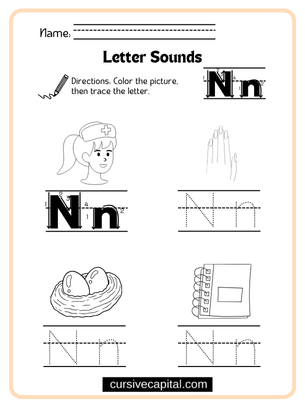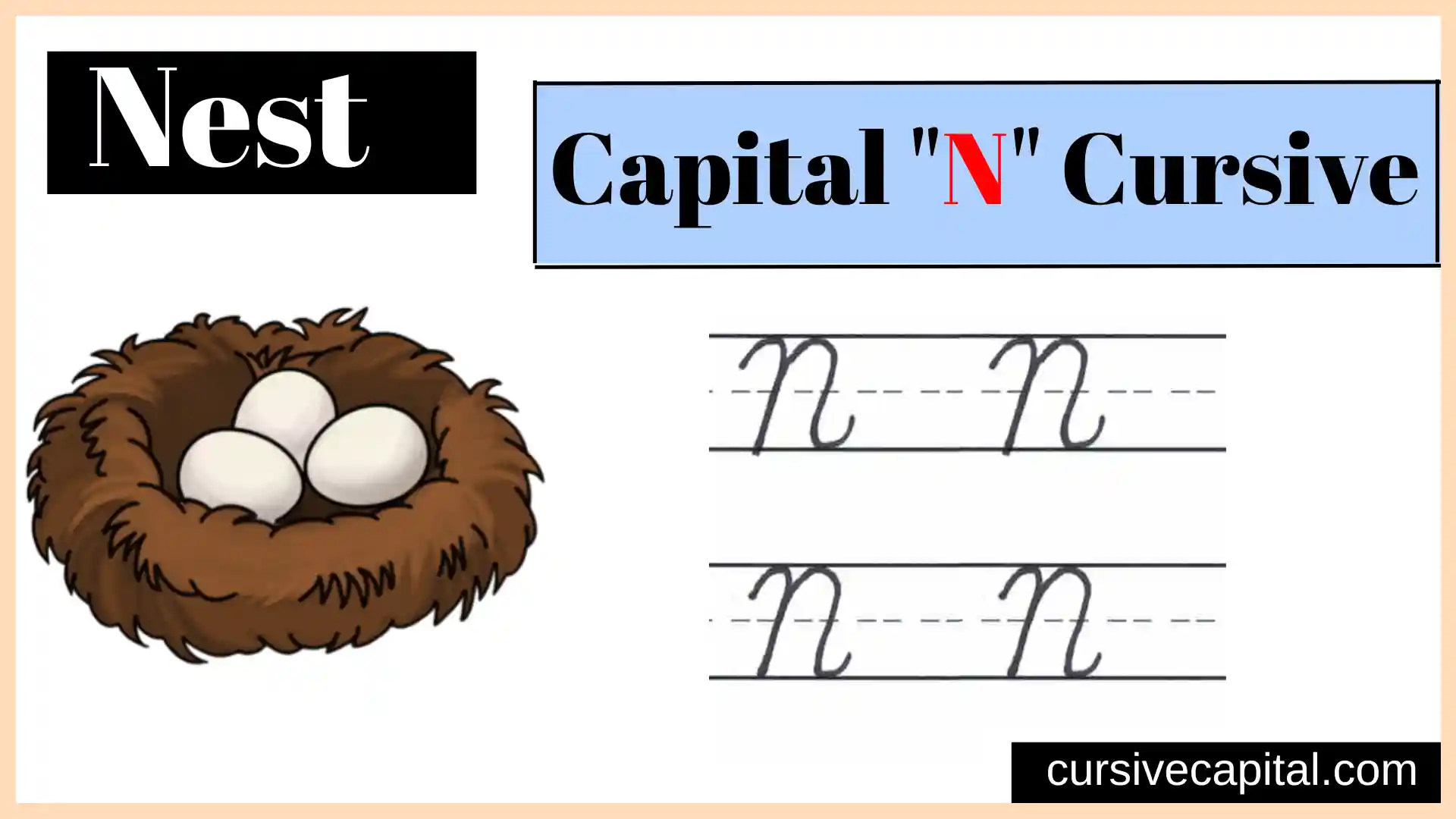Create a capital N in cursive by starting with a diagonal line from the top left, then a diagonal line from the top right, and connect them with a downward stroke in the middle.
In this article, we will explore perfect cursive “N,” including its unique features, letter formation, and valuable tips to achieve flawless execution. Whether you are a student, an enthusiast, or someone seeking to refine their handwriting skills, our expert insights will empower you to create a stunning cursive “N” that leaves a lasting impression.
Cursive N Writing

Before we delve into the specifics of the cursive capital “N,” let us take a moment to appreciate the beauty and allure of cursive writing as a whole. Cursive, also known as script or joined-up writing, is a style where letters are connected in a continuous flow, creating a seamless and elegant appearance. This art form has enthralled generations with its timeless appeal, making it a preferred choice for formal invitations, personal letters, and artistic expressions.
Understanding the Anatomy of Cursive Capital “N”
To master the art of cursive writing, it is essential to understand the individual components that form each letter. The cursive capital “N” is a delightful combination of unique strokes and loops, contributing to its captivating look. Let’s break down its anatomy:
- Entrance Stroke: The cursive capital “N” begins with a gentle downward stroke from the starting point, slightly curving to the right.
- First Ascender Line: After the entrance stroke, move the pen upward and to the left to form the first ascending line.
- First Diagonal Descender: From the end of the first ascending line, draw a diagonal stroke moving downward and slightly to the right.
- Second Ascender Line: Continuing from the end of the first diagonal descender, create a second ascending line, moving upward and to the left.
- Second Diagonal Descender: From the end of the second ascending line, draw another diagonal stroke moving downward and slightly to the right.
- Exit Stroke: Complete the cursive capital “N” with an exit stroke, moving the pen upward and to the right, finishing with a slight curve.
Tips for Perfecting Your Cursive Capital “N”
Crafting a flawless cursive capital “N” requires dedicated practice and attention to detail. Here are some valuable tips to help you achieve mastery:
1. Posture and Pen Grip
Maintain a comfortable writing posture and hold the pen with a relaxed grip. A steady and controlled pen grip allows for fluid movement and precise letter formation.
2. Consistent Slant
Ensure a consistent slant for your cursive letters, including the cursive capital “N.” A uniform slant adds harmony to your writing and enhances its aesthetic appeal.
3. Controlled Movement
Practice controlled and deliberate movements when forming the loops and strokes of the cursive capital “N.” Avoid hurried writing, as it may lead to irregular shapes.
4. Smooth Connections
Focus on creating smooth connections between the loops and strokes of the cursive “N.” The seamless flow enhances the elegance of the letter.
5. Proportional Loops
Pay attention to the size of the loops in the cursive capital “N.” Both loops should be symmetrical and proportionate to maintain a balanced appearance.
The Cursive Capital “N” in Practical Use
The cursive capital “N” finds versatile applications in various contexts, adding an air of sophistication to any written work. Here are some instances where it shines:
1. Signatures
The cursive capital “N” is a popular choice for crafting stylish and distinguished signatures. Its graceful curves and loops make it an excellent addition to any autograph.
2. Monograms and Logos
For personal monograms or brand logos, the cursive capital “N” can lend a touch of elegance and uniqueness, making it visually appealing.
3. Formal Documents
In formal documents, such as wedding invitations or certificates, the cursive capital “N” adds a sense of refinement and charm, setting the tone for the occasion.
Conclusion
In conclusion, the cursive capital “N” is a stunning example of the artistry of cursive writing. Understanding its anatomy and practicing its formation diligently will help you craft a captivating and elegant cursive “N.” Embrace the beauty of cursive writing and let your cursive capital “N”s stand out with grace and finesse. With dedication and practice, you can elevate your penmanship and create a lasting impression with every stroke of the pen.
Remember, practice is the key to honing your cursive writing skills. Embrace the beauty of cursive, and let your cursive capital “N” flourish as a testament to the art of elegant penmanship. Happy writing!
How do I start writing the cursive capital “N”?
To begin writing the cursive “N,” start with a gentle downward stroke from the starting point, curving slightly to the right.

What is the correct way to form the loops in the cursive “N”?
The cursive “N” consists of two loops. After the first downward stroke, create the first ascending line moving upward and to the left. Then, draw a diagonal descending stroke to the right, followed by a second ascending line moving upward and to the left to complete the second loop.
What are the common uses of the cursive capital “N”?
The cursive “N” finds application in various contexts, such as signatures, monograms, logos, formal documents, and artistic expressions.
Is there a video tutorial available to learn writing the cursive capital “N”?
Yes, we have prepared an online video tutorial that demonstrates how to write the cursive capital “N” step-by-step. You can watch the tutorial to enhance your learning experience.
How long does it take to master writing the cursive capital “N”?
The time required to master cursive writing, including the cursive “N,” varies from person to person. Consistent practice and dedication are key to achieving proficiency.
Where can I find more resources to improve my cursive writing skills?
You can find an array of cursive writing resources, including practice sheets, tutorials, and guides online, which can further supplement your learning journey.
Remember, practice and patience are essential to improving your cursive writing skills.
